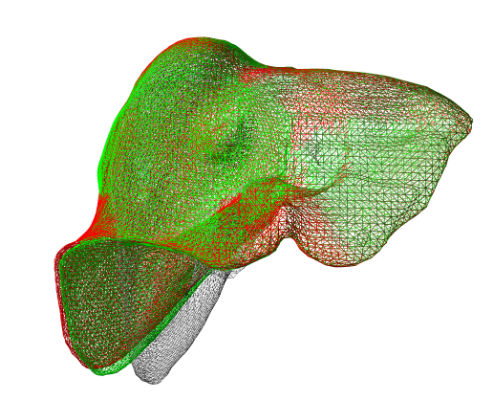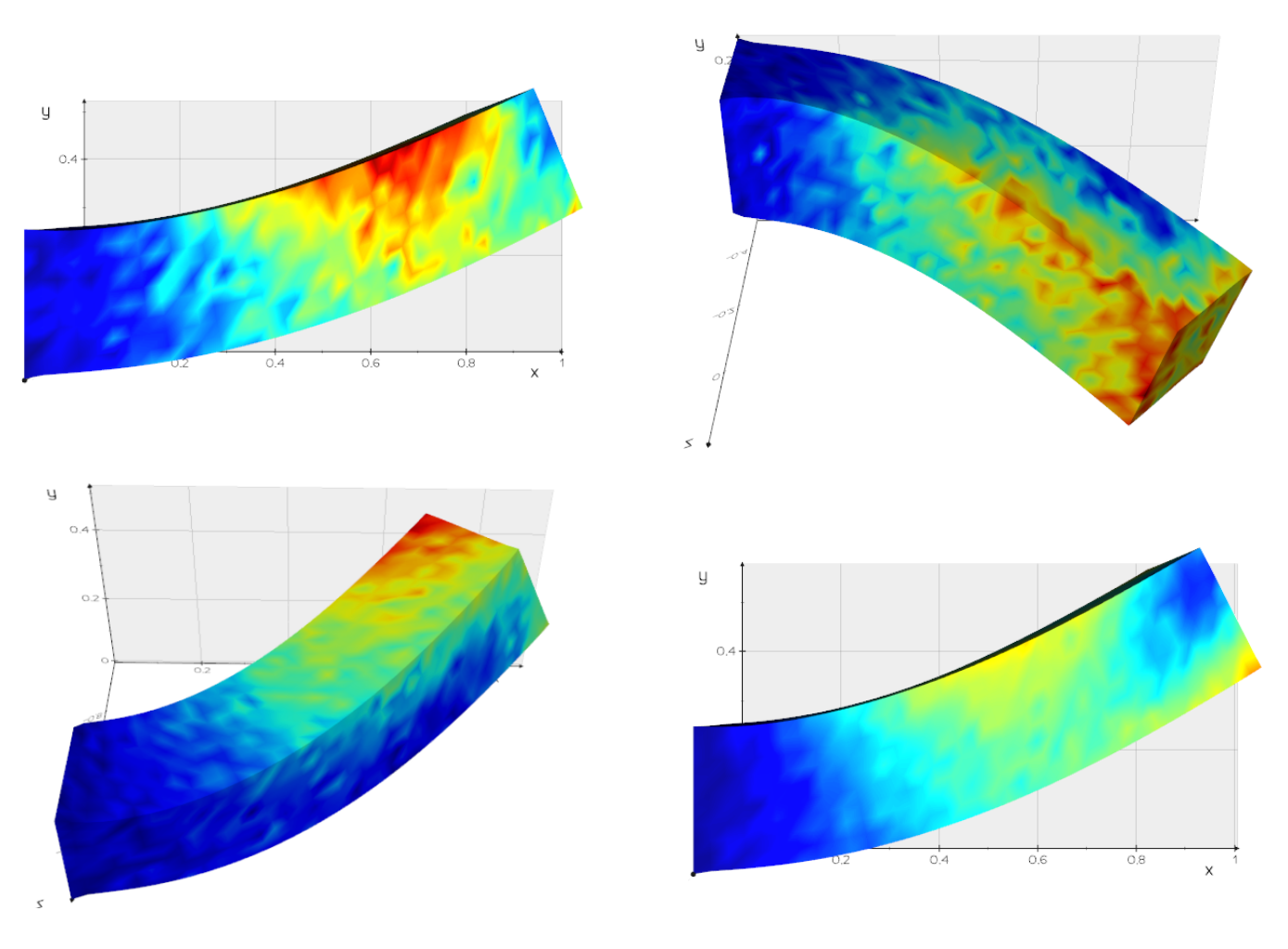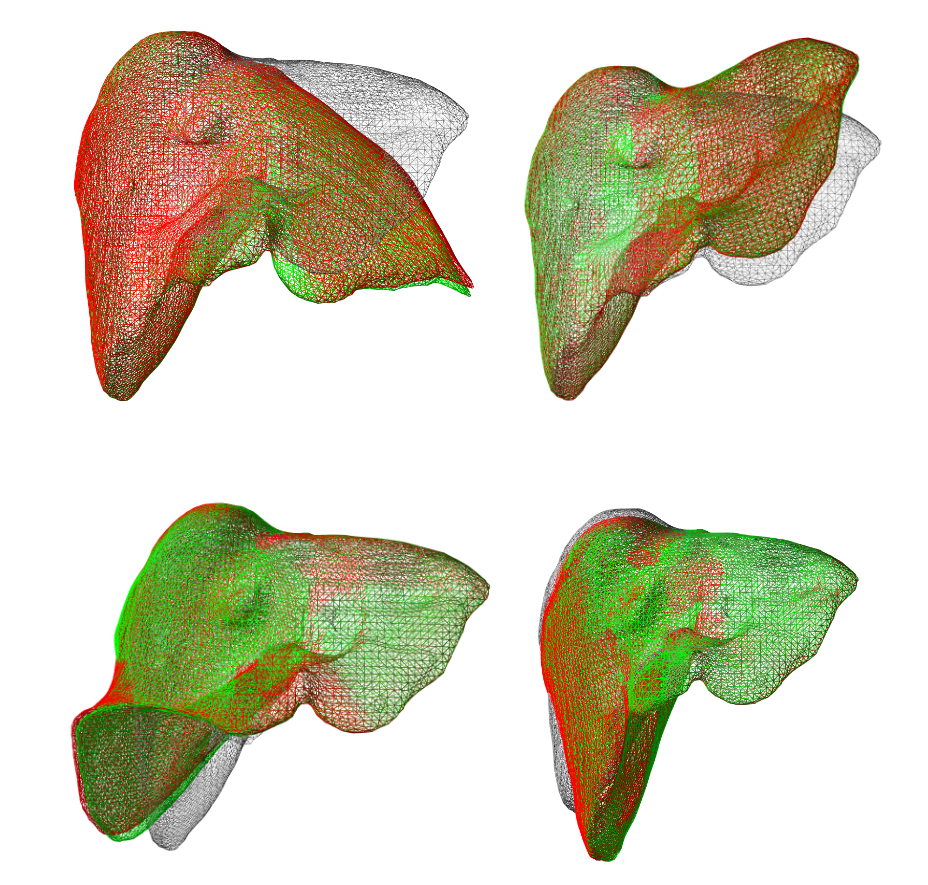A number of techniques have been put forth with the aim of accelerating the simulations of non-linear solids. These techniques remain essentially linear transformations that may, in some cases, be insufficient for accurately capturing the non-linear characteristics observed in biological tissues.
In order to address these limitations, we develop physic-based deep neural networks, a supervised version of the Physically Informed Neural Networks (PINNs) approach.
As a preliminary work, we developed a neural network that learns the relationship between an input force and the resulting displacement field. The predictions were approximately 100 times faster than the reference FEM computation while maintaining sufficient accuracy for the intended applications.
This work has subsequently given rise to several new ideas and publications. A physic-based loss was included into the neural network training process to enhance its prediction accuracy and to ensure its “physics-awareness”. The robustness of the solution was also reinforced by integrating the prediction of the network into a classical Newton-Raphson algorithm.
The subsequent phase of this work entails extending the methods to encompass dynamic simulations and developing neural network architectures that offer greater generality in the solution space – by being somewhat invariant to the meshing of the domain for instance.



